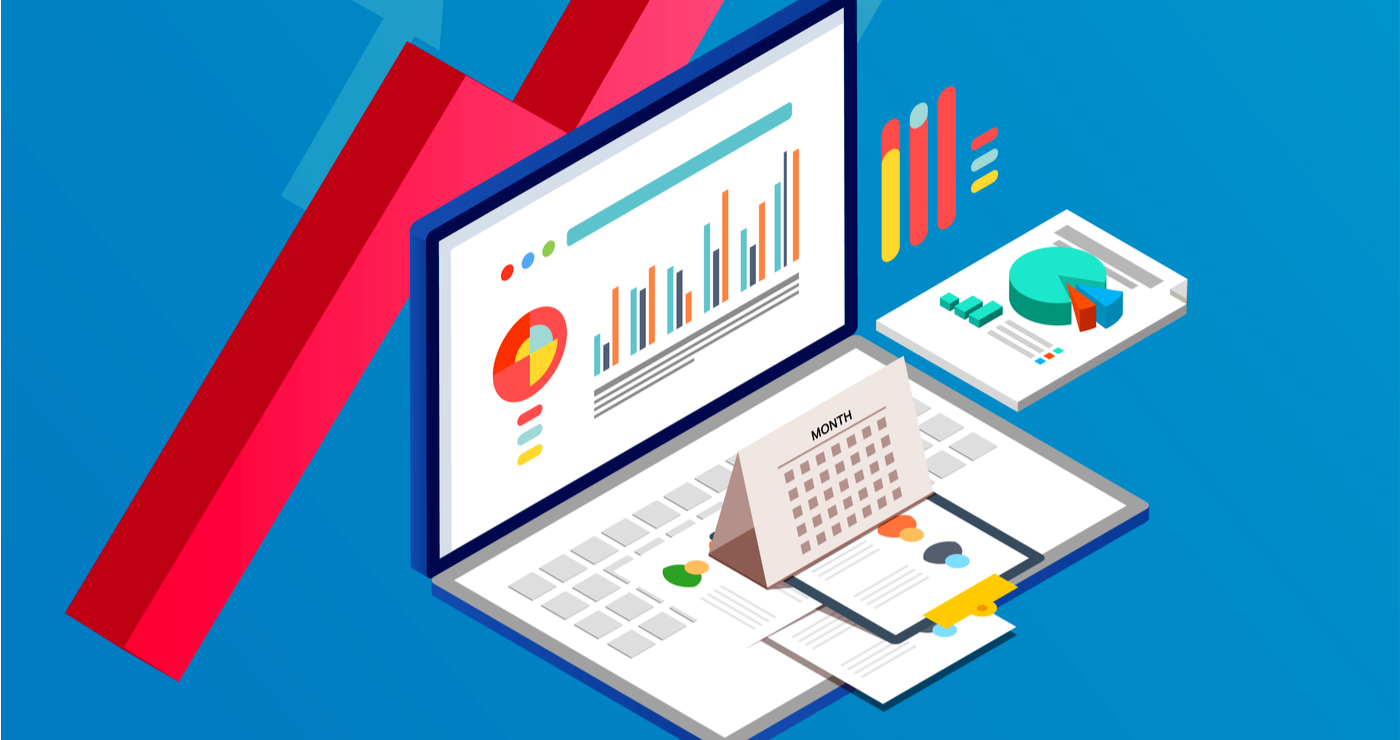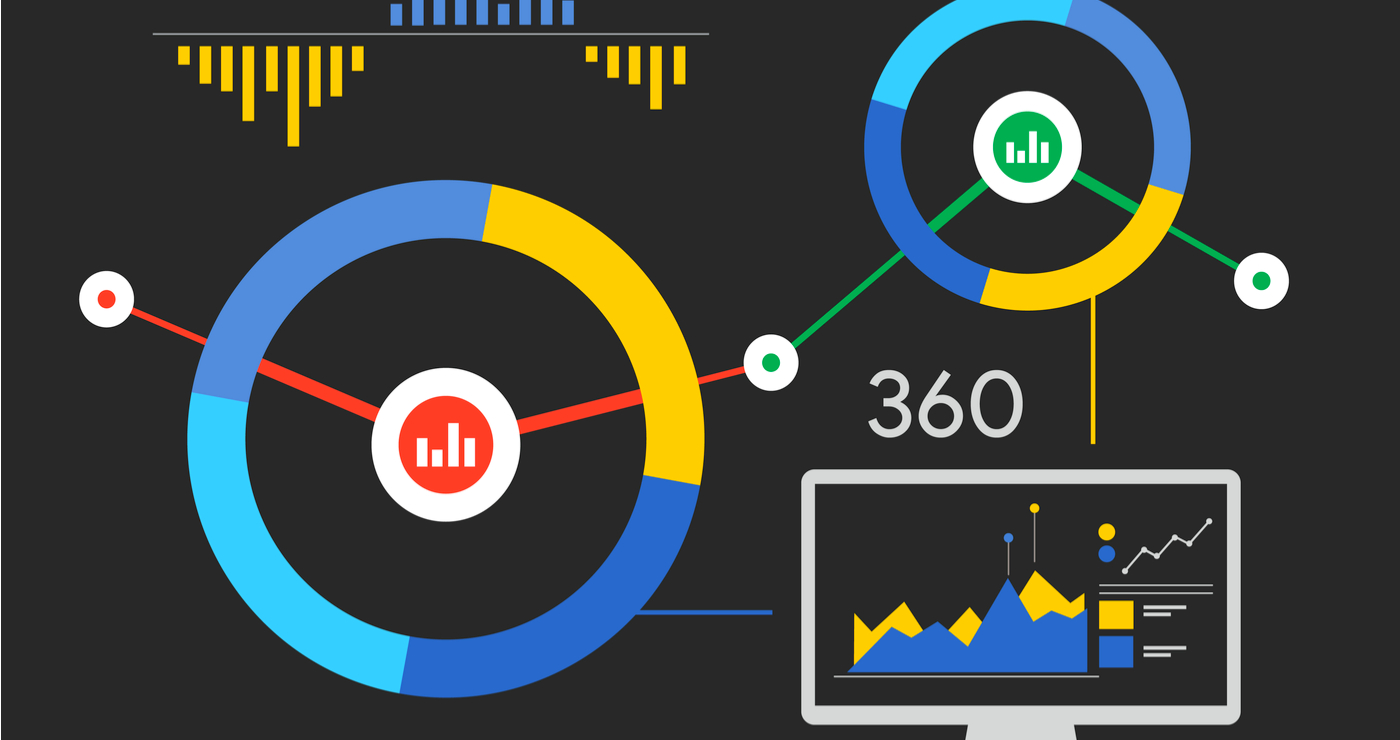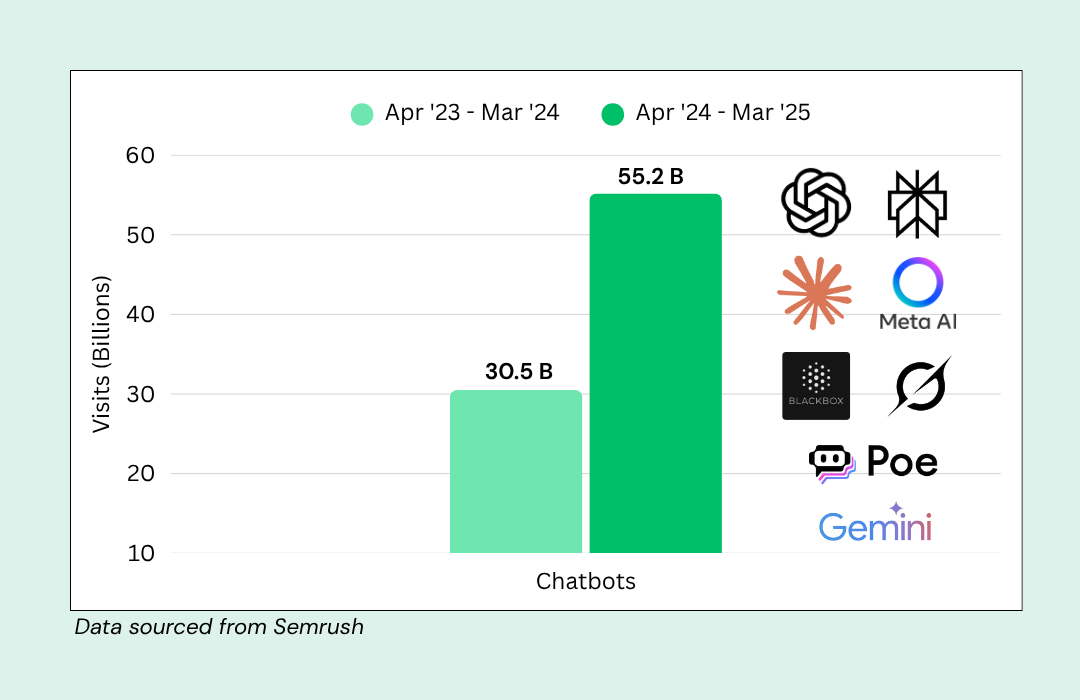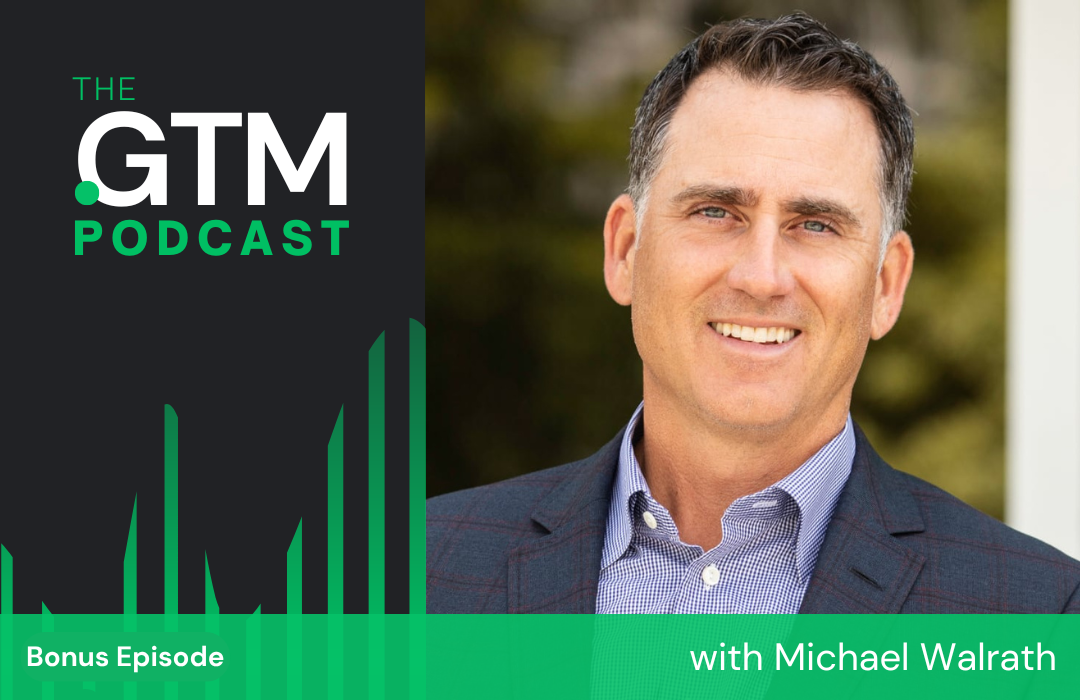The business case for sales development is built on flawless logic and verified by market data. It’s a lot better to sell to qualified prospects than to try your luck on a complete stranger.
The more time your closers spend taking moonshots, the less sales they actually make. That’s why the fastest growing B2B brands on the planet also run the largest and most sophisticated sales development teams in their class.
The key takeaway: selling success is directly proportional to the efficiency of your sales development team.
Here are key sales development concepts and tactics you should know about:
- What is sales development
- What does an SDR do?
- Sales leaders on how to ramp up your SDR team
- Sales development strategy
- Sales development process
- Sales development skills and salaries
- SDR versus Account Executive
- Sales development metrics and KPIs
- Tools and technology for sales development
- Bonus: Sales leaders on keeping SDRs happy and performing
- Sales development dos and don’ts
What is sales development?
Sales development is the field, process, or team that focuses on the early stages of the sales cycle.
This includes customer research, prospecting, initial engagement, lead qualification. Sales development teams identify the best prospects to connect with and assess which of these can be considered promising enough to vet into the official pipeline as Sales-Qualified Leads (SQLs).
Sales development originated in the 1980s, primarily in the B2B tech ecosystem. For players in this sector, revenue growth depended on sales force specialization.
Different teams owned different elements of the selling process such as lead generation, prospecting, nurturing, closing deals, and customer success. In many successful B2B companies, sales development has come to own the prospecting and lead qualification process.
Related: Top 50 Lead Generation Tools in 2023, Ranked & Rated
Evolution of sales development
Over the years, sales development has evolved into an indispensable element common to most high-growth sales organizations. Without sales development, sellers’ efficiency would suffer, causing close rates and corporate revenues to plunge.
As relevant technologies advanced, sales development became even more powerful with data analytics software, real-time business intelligence services, auto dialers, call performance monitors, email tracking solutions, automated lead generators, and other sophisticated prospecting tools.
Today, some organizations have developed two distinct roles for business development and sales development. While these two roles have similar functions, they are different. Business developers are one step removed from the sales team, combining marketing and sales skills to generate leads for SDRs to work with.
What does a sales development practitioner do?

Sales development reps (SDRs) perform only a subset of the functions commonly attributed to stereotypical sales professionals.
For one thing, SDRs do not need to close deals and are often exempt from traditional sales quotas. Hence, the favorite industry meme “Always be closing” applies only tangentially to sales development reps.
Instead, SDRs take lead generation and qualification very seriously. Instead of quotas, SDRs aim to beat a different set of activity and performance metrics.
Sales prospecting and lead qualification
Sales development reps are the go-to experts when it comes to finding potential clients, grading product-market fit, and keeping sales pipelines brimming with quality leads.
Often, SDRs manage the transition point between marketing and sales by further qualifying the marketing qualified leads (MQLs). By fulfilling their role, SDRs enable senior sales reps and account executives to close more deals faster.
Personalized email outreach and appointment setting
SDRs leverage all available channels to get the job done. They use the company’s CRM pretty much like a limb but they also probe the deep corners of social media to discover new prospects. After which they create highly personalized emails to make meaningful connections.
Following this, they clock dozens of calls in a day to make follow-ups and set appointments to accurately identify problems and determine whether any of their company’s solutions squarely address those problems.
To give you an idea of how the best sales development reps actually spend their day, here’s a real-life minute-by-minute coverage.
Related: Stop Being Poor: 3 Questions You MUST Ask About Your Comp Plan
How to ramp up your SDR team
Here’s the advice sales leaders gave on how to ramp up your SDR team:
Taft Love
- Be careful about setting strict performance-based promotion goals early on (you’ll be promoted as soon as you get ___ SQLs in one month).
- Role play is a great way to speed up SDR performance. Set aside time each week to role play. Bring in people from other teams to participate. Nothing helps a new rep get comfortable like practice followed by coaching.
- Create team goals so that there is incentive for SDRs to help one another. If the top performer of your team knows something the others don’t, give him or her a reason to share.
- Our transition structure is still being refined, but the goal is to set up a 6+ month path from SDR to AE. The last two months of the transition are used as ramp months where a portion of the SQLs remain with the SDR so that they have some pipeline in place when they’re promoted.
- The day I learned that an SDR is a bouncer and not an usher, the job changed. Even on outbound calls, it shouldn’t be assumed that the person is a good fit. It’s surprising how quickly people will try to convince you that they’re a good fit when you stop pushing and express doubt.
Jonti McLaren
- Have a strict onboarding and training process.
- When role playing starts, present to peers first. Then graduate to senior folks, then execs, etc. As they continue they’ll gain confidence, training, and preparation at each step.
- Take advantage of team selling – training and practice gets you so far, listening to dozens of real sales calls with real situations ramps reps quickly
- Iterate on above as you see success. Your # of members (per your question) is a smaller input than what is/has worked successfully in the past. You should learn and iterate a la Lean Startup and continue to improve your process
- Lots and lots of conversations. The more they have, the faster it happens, and the more accessible coaching is….those are the keys to figuring out if they are going to be successful
Preston Clark
- Get the SDR’s on the phone day 1! Get them to 20 calls per day the first week. Training aside, you have to assume they won’t understand the market until they’ve made 3,000 dials. The faster they get to 3,000 the better. Don’t ignore the other aspects of on-boarding, but don’t forget the calls!
- Make sure the SDR’s stay put for at least 12-months– and that their expectations have been managed to this date. No matter what, 12-months. 6 months is too fast. They won’t get good for 2-3 months– and then you’ll want them training by example for a few months for the other guys you’re ramping up to replace them.
Scott Lorenson
- Underscore the importance of not being afraid to fail and to have fun with prospecting. I even ask my reps to share their *epic fails* with the team! But as they continue to dial, learn from past calls and not make the same mistake twice.
- Lastly, the first thing I make clear on my initial phone screen is that I need a minimum 12 months (or more) in this role. And that I don’t want to hear whining 6-8 months in, “When can I become an AE?” If they can’t commit to that, I can’t commit to them.
Adam Chambliss
- Start new SDR’s in pairs or groups whenever possible. Not only will it save your sanity from having to on board multiple times in a short span, but the SDR’s will enjoy the training more when learning with peers.
- People learn in different ways, so mix styles throughout. Tell them how to do, show them how to do it, & make them practice/apply a great deal themselves. Also, mixing teachers/mentors helps.
- Document all info that you want them to learn. We created a Playbook that contains scripting, processes, consumer profiles, best practices, etc. It helps you keep track of what needs to be taught. We also give them a soft copy of our Playbook on day 1 to start making them accountable for self-development. I message: “we will cover all of this, but LEARNING is on you. Everything you need to know is in this.” I’ve had several that take it home & start reading it religiously that night
- And one tip on promotions: make them show some capability of doing the AE job before you promote them. We give them a metric to strive for in the SDR role to make them eligible to APPLY for promotion. As an AE applicant, they have to interview just like an outside hire. They also have to run a demo. If we aren’t satisfied, we do not promote them. The key here is to also give them very specific feedback on why they aren’t qualified yet & help them develop a plan to improve & re-apply.
There are a few instances where individuals were discouraged by not getting promoted & quit. Honestly though, we would’ve eventually lost those folks in the AE role by having to manage them out due to poor performance. Most SDR’s that “failed” promotion the first time end up taking the feedback, improving, getting promoted, & doing well as an AE.
Aaron Ross
Why not start new hires someplace other than in outbound, or even sales? Outbound is just about the slowest place to learn your what you need to learn in sales.
Put them on the frontlines of Customer Service, Account Management or other areas of the business where they get to interact directly with customers. This way they can become extremely knowledgeable as fast as they can about the market, customers, and product.
They’ll be much more effective, much faster and this is true for anyone in sales.
Brandon Crawford
Start your reps off by disqualifying prospects – counterintuitive right?
This does a few things for new hires:
- Allows them to have a lot of conversations off the bat (easier to get a hold of – we sell mostly to the enterprise, but we have a lot of inbound from small companies). This is key to a quick ramp.
- Has them run a prospect through our full qualification criteria in order to disqualify. This ingrains our qualification process into their mind.
- Puts them in the mindset of “you are not good enough for me”. This is the interesting one. I’ve found that it helps MDRs/SDRs who have zero experience quickly gain the ability to guide a prospect conversation.
If you know the prospect is not “good enough” for you, then you can mentally flip roles. The prospect has to sell you instead of you selling them. This helps give the reps confidence, which is the one thing that you need to build on very early with zero-experience reps.
I recommend doing this in the first week and mix in with calling qualified prospects.
Kirsten Nelson
My favorite way to spin up SDRs quickly is to have them work events, especially booth duty. Hearing the questions that customers ask, listening to (and memorizing) answers really puts a lot of information in context quickly.
The best thing about it is that they get to learn who the customers are, what they care about, and how your company addresses those needs. This can perform much better, be more enjoyable, and soak up less resources than training on internal systems or policies.
Richard Harris, Owner at Harris Consulting Group
Hopefully as the team gets bigger you can leverage more senior people to help with onboarding. This let’s your team take on additional responsibilities and allows you to see additional potential in reps and your team.
I would also add that the process should not change only based on the size of the team, but also on things like shifts in target verticals, additional lessons learned. In general you should always try to “break” your process every few months so you don’t get stuck in a rut or potentially find a better way.
My advice on promotions is that they are earned, not structured. There should be a path with certain expectations and goals being met. However a promotion should also be based on initiative. Telling your reps that they have to do “Projects” to help the team and leave it purposely vague helps in many ways:
- It will help the cream rise to the top.
- It will make them become more self-reliant and not have to be spoon fed. (Which is the difference between good and great in my opinion.)
- It can help you get outside your own comfort zone and make you think.
Sales development strategy

An organization’s sales development strategy greatly impacts its chances of meeting revenue targets and achieving growth. A winning sales development strategy covers three key elements: people, process, and technology.
The sales development strategy should focus on delivering high performance on relevant metrics that ultimately translate to higher topline figures. Thus including recruitment to training and even software adoption.
In many B2B organizations, sales development is closely aligned with marketing such that their respective strategies complement each other and coincide in many crucial touch points.
As buyers become more sophisticated, SDRs are compelled to adopt many marketing techniques such as video prospecting and context-based outreach.
Sales development process
As the business world radically transforms into a customer-centric landscape, the sales development process should similarly start with the buyer on spotlight. That means how a company establishes its ideal buyer personas (IBPs) and the benchmarks it uses to define a sales-qualified lead are of crucial importance.
Only after a qualified lead has been fully defined can a team start to develop the processes, tools, and the tactics that will comprise its sales development apparatus.
Steps in the sales development process
1) Identify what a sales qualified lead is, based on —
- demographic qualifiers (industry, location, company size)
- contact person’s specific role (authority) in the organization
- subject’s willingness to engage the sales team
- problem vs product fit
- budget (capability to purchase a solution or subscribe to a service)
- situational context or urgency (timeline)
2) Align sales and marketing efforts based on SQL definition
3) Establish process and assign roles for —
- Inbound (marketing-driven) leads
- Outbound leads (prospects belonging to a company’s total addressable market and who are discoverable by SDRs)
4) Engage lead via email, phone call, and other channels
5) Qualify lead’s likelihood of purchasing a product
6) Determine whether lead is worth pursuing —
- Ignore lead if resources required to sell outweigh potential value
- Vet lead into the sales pipeline as Sales Qualified Lead (SQL) if potential value justifies further allocation of resources
7) Hand over ownership of SQL to account executives
- Introduce SQL and account executive
- Set a meeting between SQL and account executive to move the customer journey forward
Sales development skills and salaries
 The SDR position represents the entry point for a career in tech sales. ServiceNow Senior Director Ralph Barsi outlines four key responsibilities SDRs need to fulfill:
The SDR position represents the entry point for a career in tech sales. ServiceNow Senior Director Ralph Barsi outlines four key responsibilities SDRs need to fulfill:
- Research, identify, and prospect for new clients
- Make lots of phone calls and send lots of emails
- Schedule quality appointments and meetings
- Create and develop new opportunities (add prospects to the pipeline)
For their efforts, SDRs enjoy an average salary of US$48 K according to Glassdoor, with experienced SDRs taking home as high as US$60 K to US$70 K.
Meanwhile, sales development reps employed by SaaS enterprises receive significantly higher salaries, starting from US$60 K (base) to as much as US$118 K, as reported by RingDNA.
Skills and traits of the best SDRs
- Product knowledge
- Customer-centricity
- Full awareness of the buyer journey
- Active listening
- Marketing communications (email, social media, voicemail, live phone calls)
- Objection handling
- Familiarity with sales software and lead generation tools
- Drive/Self-motivation
Sales Development Rep (SDR) vs. Account Executive (AE)
SDRs use all relevant tools and tactics to find prospects across the addressable market who match the company’s profile for a sales-qualified lead (SQL). They use phone, email, and social media messaging to spark conversations and set breakthrough appointments.
On the other hand, account executives lead the effort towards getting prospects to sign deals by adeptly performing demos and customizing solutions to prospects’ specific pain points. Account executives also partly own the responsibility to keep customers loyal to the brand through continuous engagement and value sharing.
SDR success is primarily assessed based on the number of qualified leads they funnel into the pipeline as well as the number of successful appointments they are able to schedule. On the other hand, AE success largely depends on the number of deals they close.
Sales development metrics & KPIs

Different organizations adopt varying sets of sales development metrics and key performance indicators (KPIs) depending on their business models. However, sales development metrics generally fall under two main categories:
1. Activity/Operational
Tracks how efficiently SDR’s perform basic tasks and include the number of calls, emails, meetings, and qualified leads SDRs are able to deliver over a certain period of time
RELATED: How to Qualify a Prospect (And 6 Common Mistakes to Avoid)
2. Impact/Performance
Monitors the quality and outcome of an SDR’s contributions to the sales process and include the percentage of qualified leads that eventually become paying customers, the average deal size of these customers, and the average time it takes to transition these qualified leads from start to end of the sales cycle.
Useful metrics for sales development
- Number of outreach attempts per day/week/month: Tracks the number of emails, calls, and meetings SDRs make over a specific period of time.
- Open and response rates for outreach attempts: Monitors how often prospects open or respond to emails and voicemails.
- Number of SQLs per week/month: Monitors how many SQLs an SDR is able to vet in a given period.
- Number of calls per win: Tracks the number of calls it generally takes to orchestrate one successful deal.
- Number of SQLs per win: Tracks the quality of SQLs
- Average deal size per SQL: This metric determines whether sales development reps are vetting high- or low-value opportunities into the pipeline.
- SQL win rate: This metric monitors how many qualified opportunities are lost or won over time.
- Share of pipeline volume (number and deal size) sourced by SDRs: This metric monitors the relative contribution of SDRs to the organization’s potential output.
Tools & Technology for Sales Development

Technology is an SDR’s best friend. In fact, much of the tech stack for sales organizations address the needs of sales development reps.
Because many of the tasks SDRs need to perform, software automations represent a very welcome addition to the SDR’s tool kit. Particularly when it comes to email and call management. Advances in AI and machine learning have also made life much easier for SDRs improving their ability to find, engage, and qualify leads.
Top tools that SDRs use
Accent Accelerate
Sales professionals using Accent Accelerate gain complete visibility into the entire sales cycle. Opportunities, selling activities, and customer sentiment are some key elements here.
Bigtincan
Augmented by AI, this software provides real-time intelligence about prospects. It also recommends the best content to engage them with at every stage of the sales process.
CircleBack
CirlceBack helps SDRs organize all the contact information from their email, phone, and social media accounts into one enhanced address book. CircleBack can be integrated into CRMs.
Cognism
Fueled by automation machine learning, Cognism enables SDRs to accelerate prospecting activities. Thus making it easier to find and connect with the right prospects.
Datanyze
SDRs can use Datanyze to probe a prospect’s website to get a top-view picture of the technologies and services they use. This helps SDRs make smarter decisions on product fit.
Engagio
Engagio provides a clear view of an organization’s decision-making structure. SDRs can thus identify the best contact persons to engage.
Hoopla
SDRs and other members of the sales team can improve selling performance through Hoopla’s analytics, data visualizations, and gamification capabilities.
LeadGenius
This solution crunches real-time data to enable sales practitioners to locate and engage prospects better.
LevelEleven
LevelEleven leverages performance data to manage sales activities and promote positive sales behavior among SDRs and their peers.
LinkedIn Sales Navigator
Most enterprise decision-makers are on LinkedIn. LinkedIn Sales Navigator makes it easier for SDRs to spot and reach them.
Outreach
Because SDRs use email all the time, they’ll reap huge benefits from Outreach’s voice and email automation features. To save time, SDRs can also integrate Outreach into their CRM to log all their messaging activities.
Pipedrive
Smaller teams that prefer a leaner and more visual CRM can turn to Pipedrive to get complete awareness of their sales activities and goals.
Salesforce
CRM means Salesforce for many successful enterprises. This platform’s long-term dominance of the space allows it to enhance its feature set with a wide range of capabilities and integrations.
SalesLoft
This universal prospecting platform empowers SDRs to move the needle when it comes to the number of appointments, demos, and qualified leads they deliver.
Yesware
SDRs benefit from this tool’s prescriptive analytics, outreach automation, and insight-generating capabilities. Among other things, Yesware can glean prospect sentiment by tracking email open and response rates and other behavioral indicators.
Sales leaders on “How to keep your SDRs happy and performing”
From the Sales Hacker community:
Happy SDRs and ADRs are armed with the right tools that make them effective. Being chained to an autodialer all day is no fun. Cold calling uninterested prospects is a necessary evil but can suck the life out of a person.
Investigate and invest in new tools for your reps so they continually improve and simultaneously add the latest tools to their resume.
They may stay longer if they are having fun, doing well and adding to their resume.
– Dan Arra, VP of Sales and Services/Co-founder or Altocloud | @danielarra
Assuming they’re not rightfully graduating to AE, it would have to do with engagement. Now, I’m no different than any other schlup panhandling stats, but this one caught my eye in reference to your question. I couldn’t not post it.
According to CSO Insights, sales forces with low engagement lost 14% of their people involuntarily. This percentage shrank to 8% at organizations with high engagement.
Active engagement is neither happenstance nor simply a ‘nice’ idea,” the report states. “Rather, the data show that highly engaged firms, especially their managers, are supported and actively ‘in the game,’ coaching their reps and being supported with timely/accurate metrics — all of which translates into better performance numbers.
– Jon Birdsong, CEO at Rivarly | @JonnyBird
SDR’s are no different than anyone else. They all want to succeed and contribute. Companies have been giving them tools for years now and the average time on the job is still less than 10 months.
What SDR’s need to know Is HOW to use the tools. They need proven, predictable ways to execute their job that will actually achieve the outcomes to match the expectations management puts on them.
We have seen dozens of companies that have been successful at doing this. They see 200% or more increase in results. They positively attrit many SDR’s and keep them around much longer.
Among the things that all these companies have in common, is they they have processes that help SDRs see success very early on. They help SDRs understand WHY things work they way they do and (perhaps most importantly) they take the guesswork out of every aspect of the SDR role.
– Mike Scher, Chief Demand Creation Architect, at FRONTLINE Selling | @FRONTLINE Selling
Cold calling, although essential skill, is only a small portion of selling. For the benefit of all there should be an intermediate step up from DR to AE, an Inside Sales role. Inside Sales should be more of the same cold calling with closing of smaller, less strategic deals.
My experience is strictly in larger enterprise sales, and understand this doesn’t work as well for SMB, but SMB shouldn’t have DRs supporting them to start with.
– Jason Stefani, Account Executive at Box | @jstef10
Something that has worked well for us is “newness”. Make sure there are new things happening on a constant basis.
A lack of newness is how any and every relationship (working or personal) goes stale.
The SDR role is a very repetitive position. Even if you’re extremely good at it, you’re generally doing the same thing every single day.
We’re always doing coaching and training, tweaking the scripts, emails, etc, but I’ve never heard an SDR go “AWESOME! A new script! YES!” The 1-on-1 meetings are always a good time to keep people engaged, but obviously there needs to be something more.
Having a clear path to success and promotion is huge too, but it does not motivate or keep people pumped up on a day to day basis.
Here are some things we do to try and incorporate newness:
- Random power hour of calls. Get the team together and just crush for 1 hour straight.
- Make calls standing up or pacing around.
- Top dialer picks the in-office Pandora station.
- FLASH contests AKA next meeting scheduled gets free lunch. $10 is taped to the board.
- Unknown Competitions. Picking a day and myself saying, “The first dial of the day is getting X” and rewarding that person at the huddle. They didn’t know the contest was even happening.
- Tie Tuesdays – ditch the jeans and come in looking sharp for a day.
- Even something as dumb as a desk switch up.
Things that haven’t worked:
Spiff’s – The classic if you hit X then you get $$, as you might know well, $$ is not a great motivator of activity
– Kevin Dorsey, Corporate Sales at H.U.M.A.N
100% agree with Kevin here. We create new campaigns/initiatives monthly. The primary KPI’s stay the same, but we add spiffs and contests built around these new campaigns. As everyone has stated, the jump is HARD. But a little gamification goes a long way.
– Preston Clark, CRO at LawRoom
Please note that this is a perspective on a longer sales cycle versus something more transactional.
ADR/ SDR roles are essential roles in the sales process and need to be looked at as not a stepping stone role. As long as sales reps are doing well, then they will like their role. I believe that the initial expectation is important of being transparent about the role, but at the same time, there needs to be incentives, realistic goals, appropriate feedback on performance and a change in structure.
Additionally, Expectations shouldn’t be tied to the number of dials or amount of time on the phone, but their real success to the organization and what they are actually adding.
Here are some of the questions you should ask yourself, the manager:
- What type of sales cycle are you supporting?
- If there is a high attrition rate, then why?
- Are you hiring ADRs or account executives?
- Are you being transparent?
- How can I make employees happy and excited to come to work?
– Joe Corrales, Strategic Account Manager at Questel SA
Final takeaways: Sales development do’s & don’ts
Representing the typical stepping stone to an executive sales career, sales development might be the most activity-intensive role in a sales organization.
However, it’s also among the elements most crucial to the success of a profit-oriented B2B company. A sales force with a sagging pipeline of low-quality leads is heading towards oblivion. In contrast, an organization with a highly motivated and effective sales development team often always leads the pack.
Here are some final tips SDRs should consider to deliver excellent performance.
Do your math
Prospecting and lead generation is largely a numbers game. Improve your sales activity metrics by using technology and tactics that help drive SDR performance. Practice effective time management so you are always performing the right sales activity at the right time.
Do your homework
Numbers alone won’t cut it. Be the best at what you do by building skills, gaining top-notch product knowledge, and learning prospecting tricks from mentors.
Don’t take it personally
Selling is rarely a walk in the park. By sheer volume, the negatives may seem to outweigh the positives at any given time. However, the right outlook, behavior, and strategies will help you become better at engaging prospects and rolling with the punches.
Don’t lose focus
Selling has become a buyer-centric paradigm and focusing on prospects is a good tactic to adopt. Establishing the right buyer personas and ideal customer profiles at the onset will help your team make reliable product fit assessments later on.







